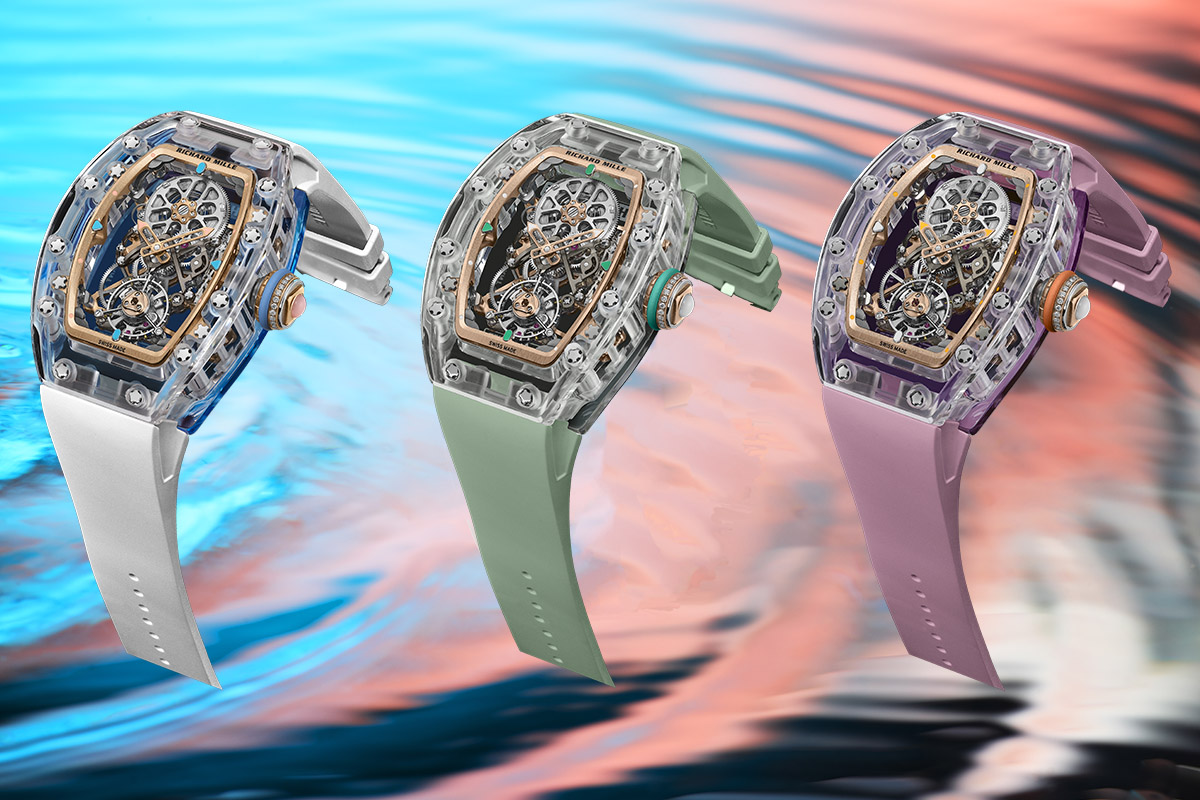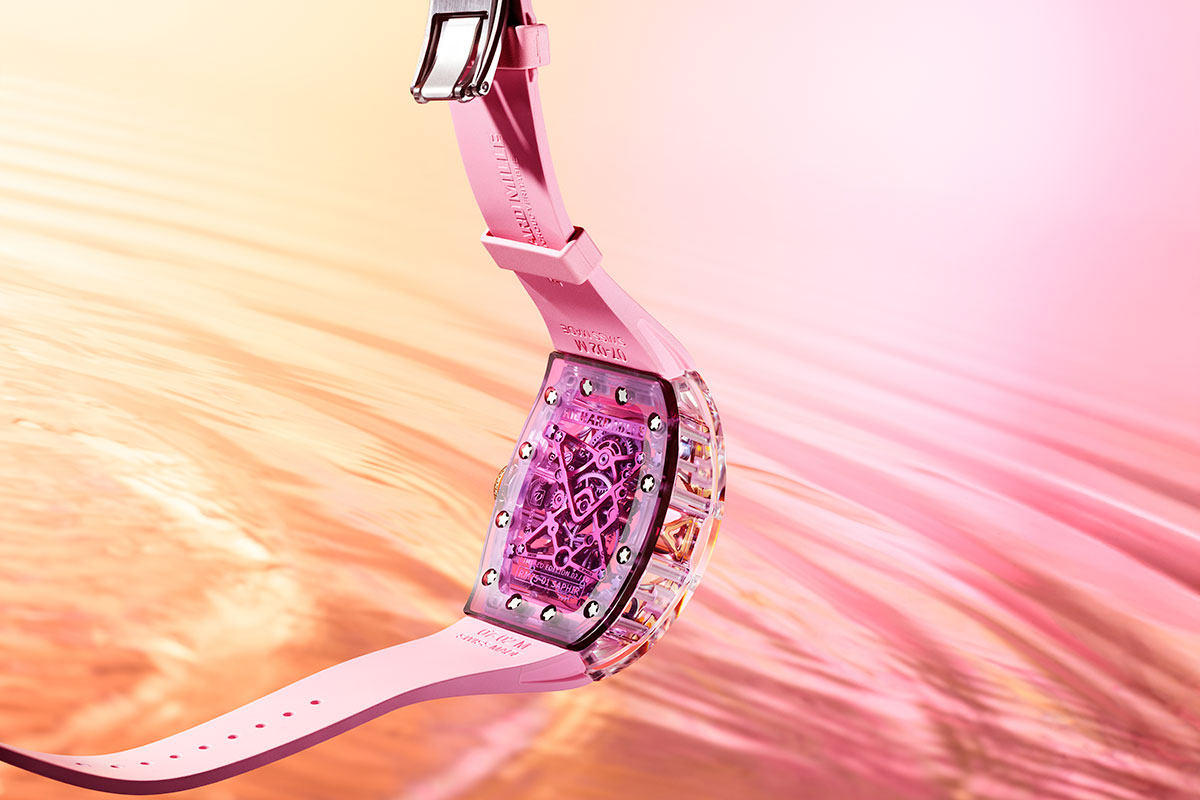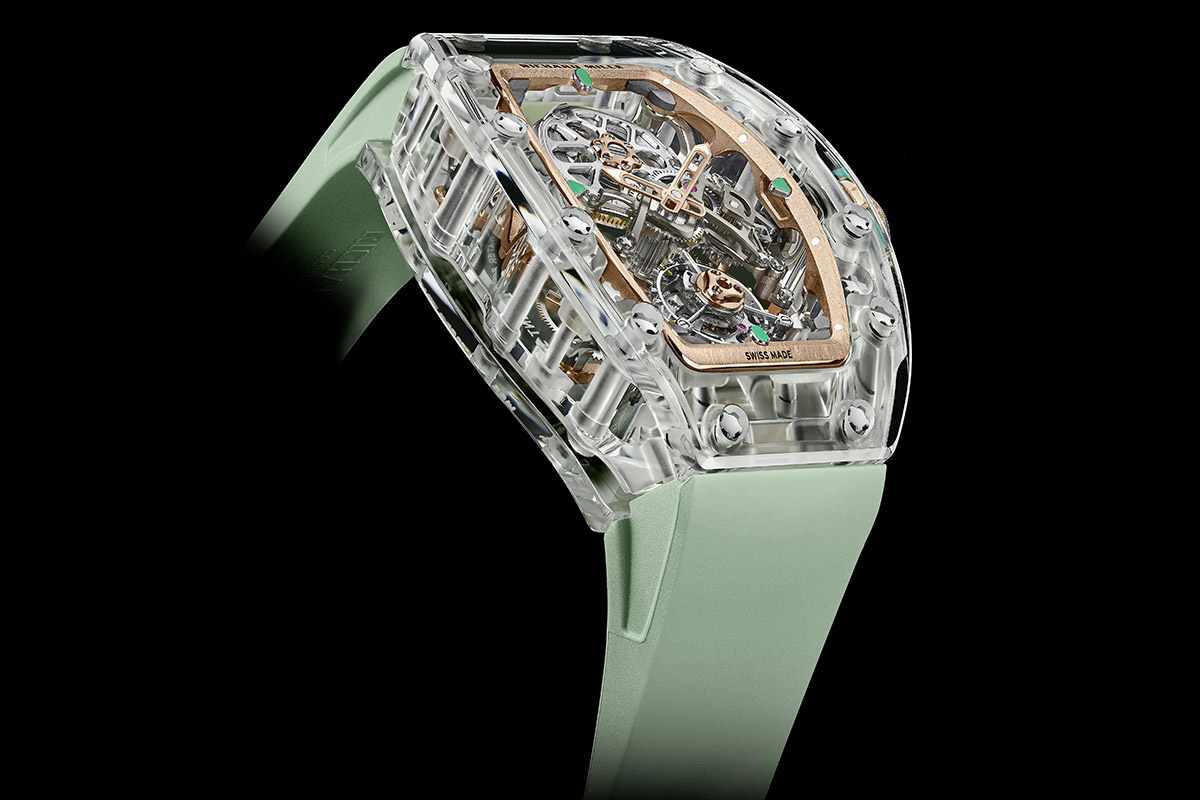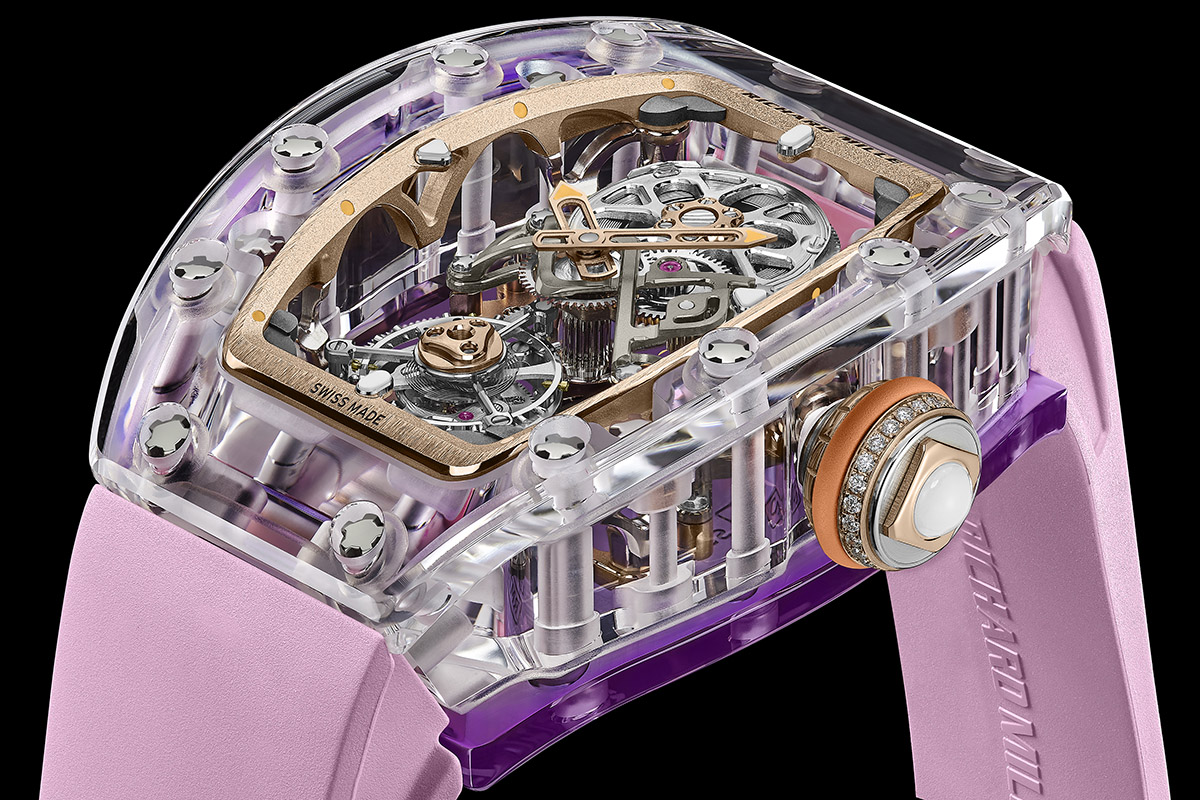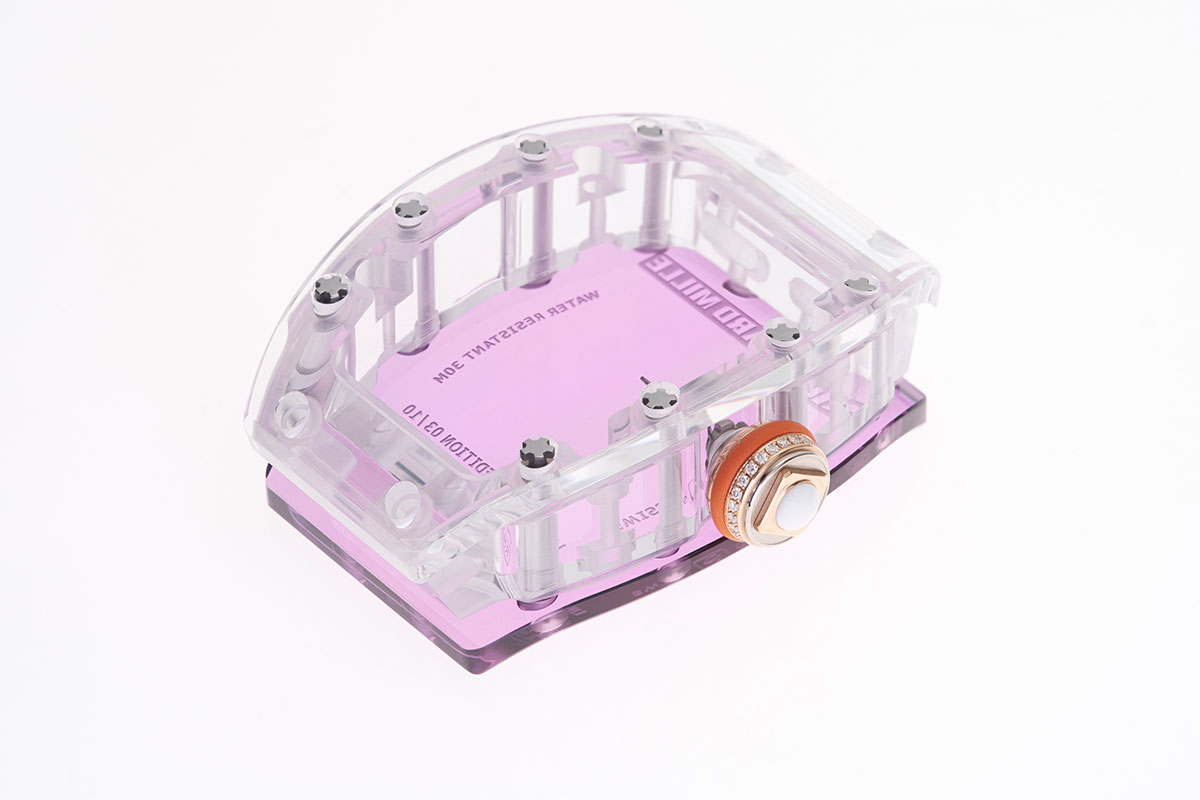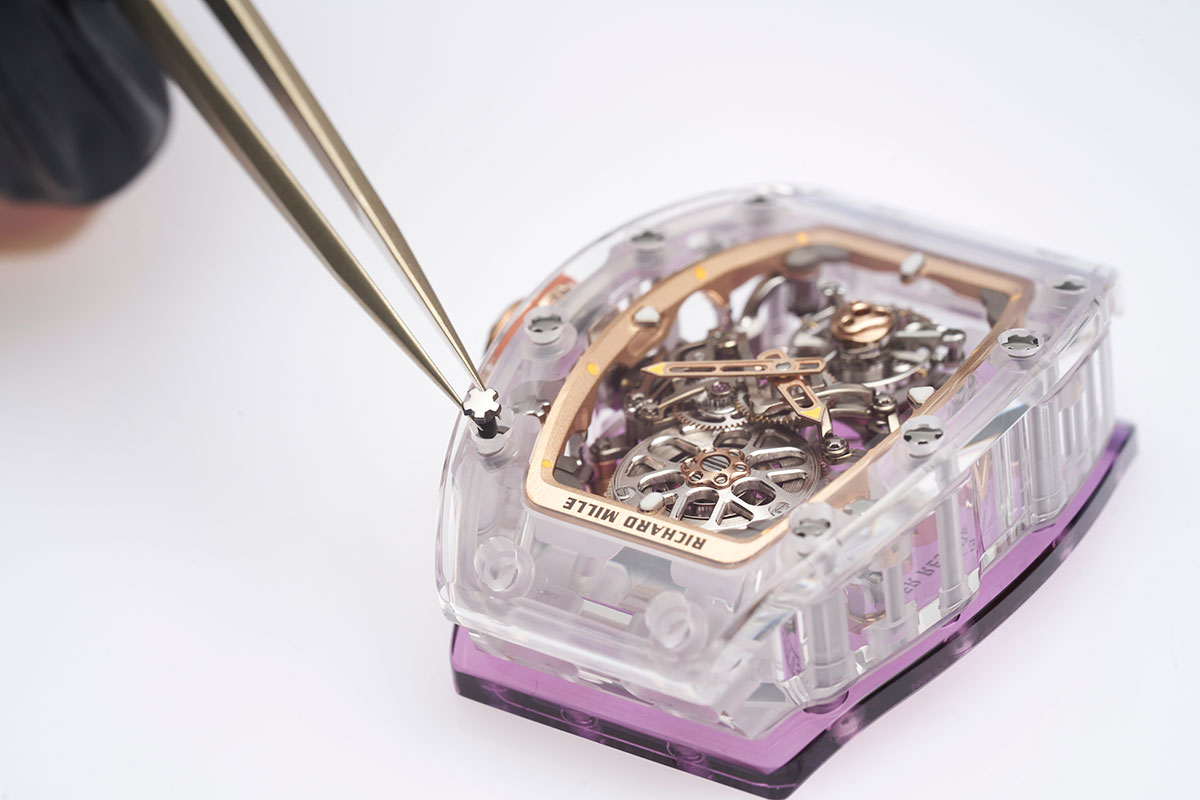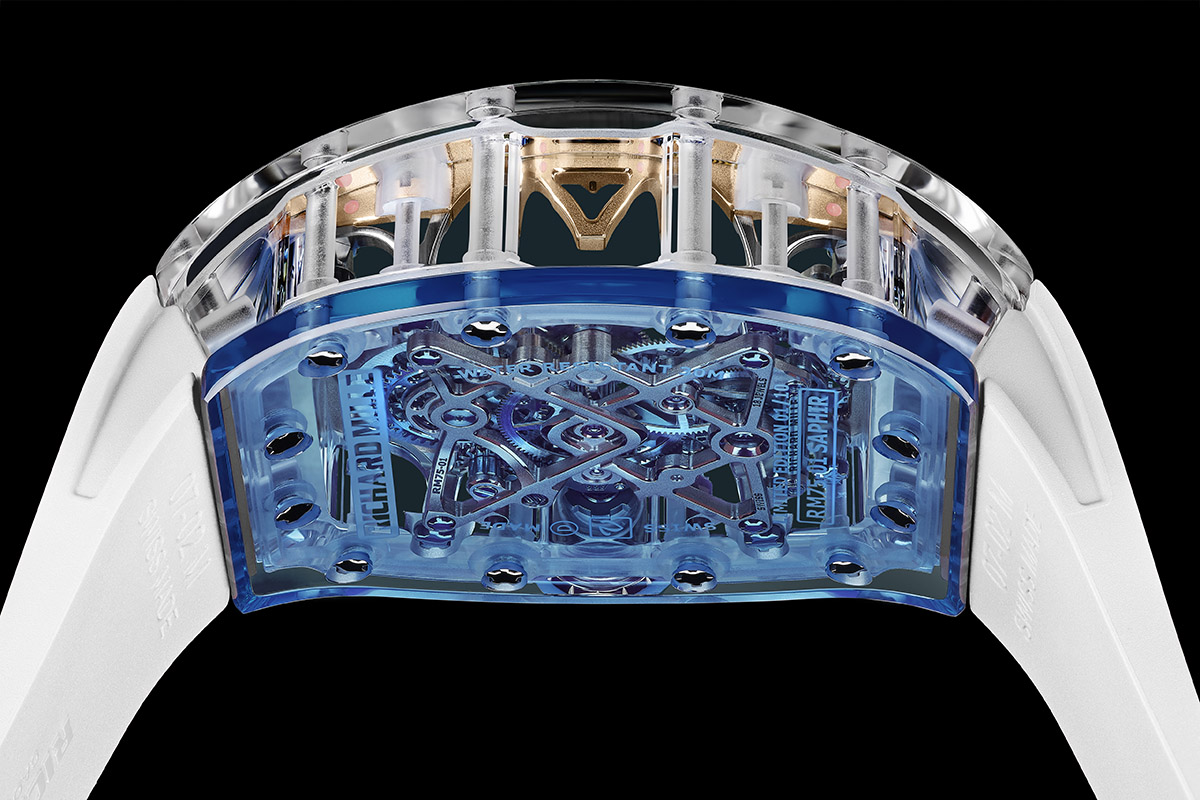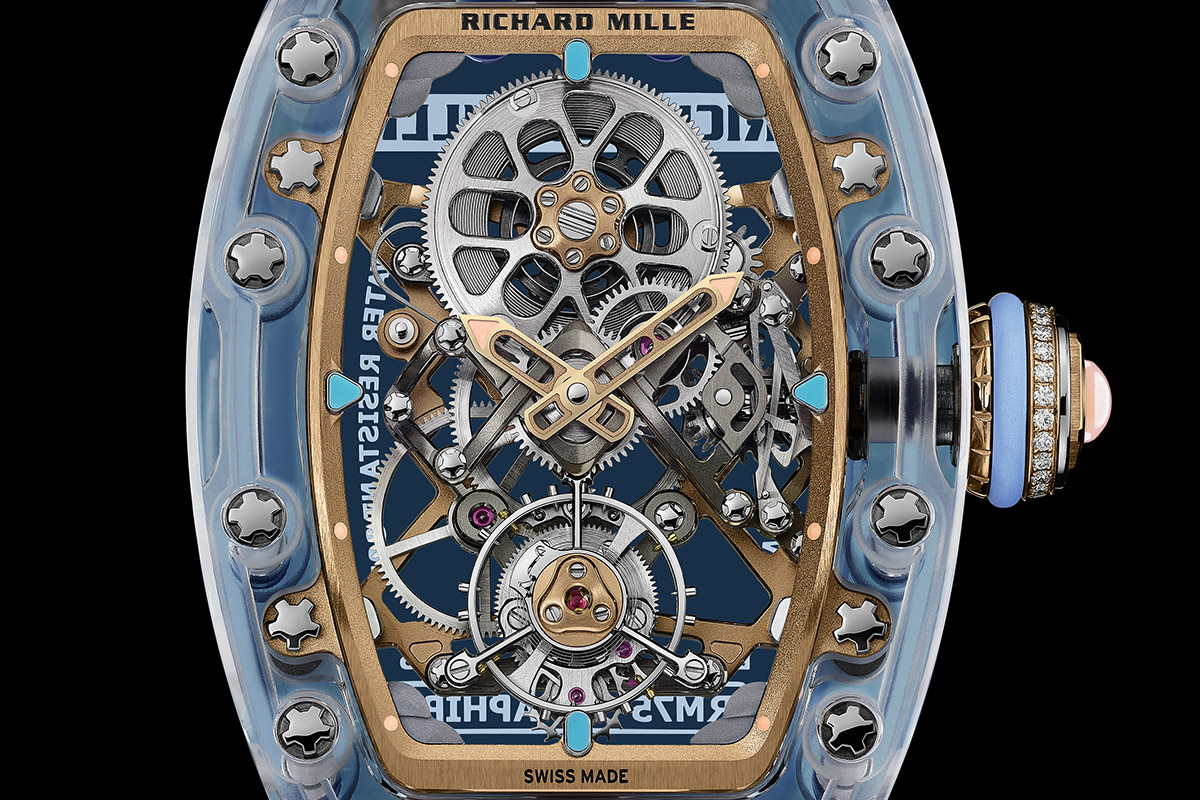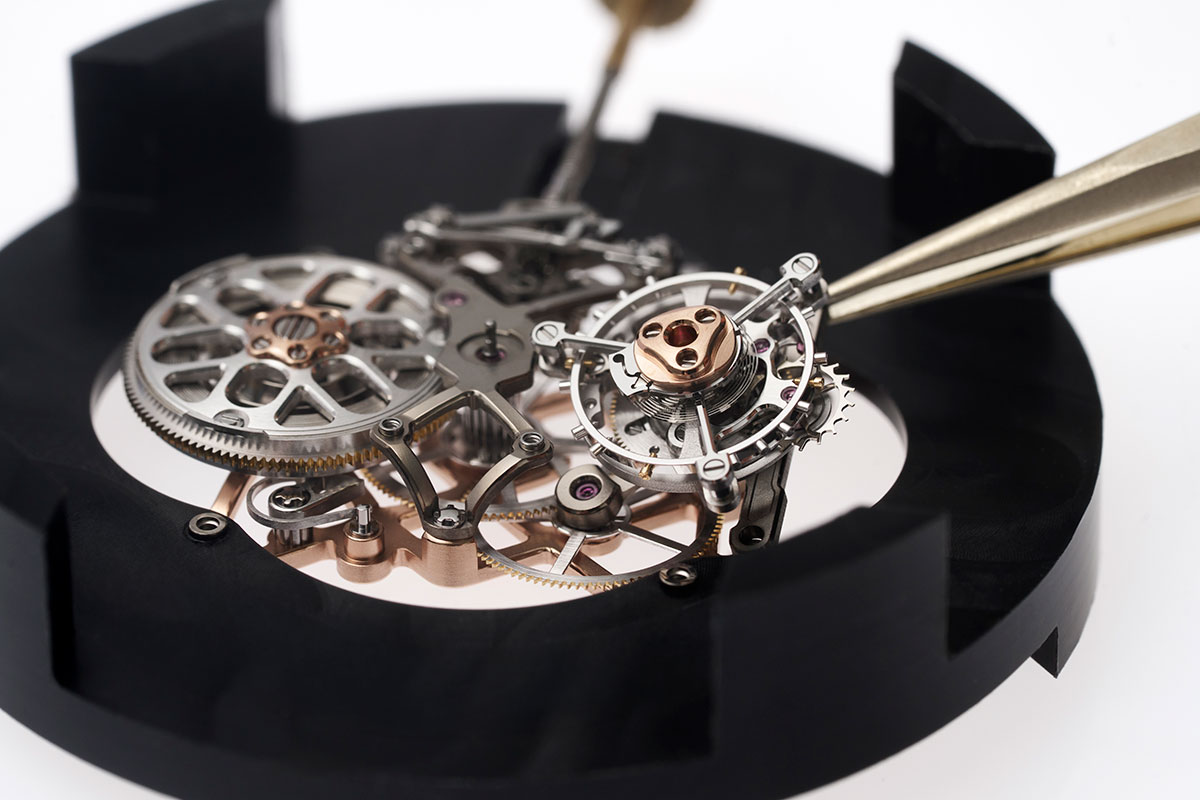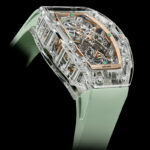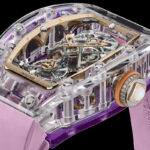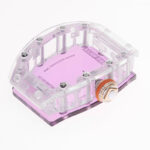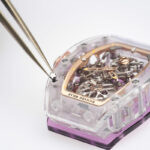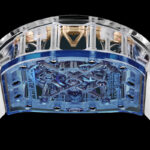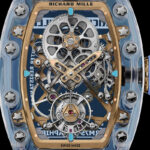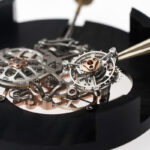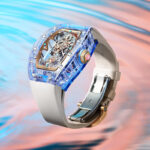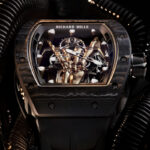This post is also available in: Italian
If the great 17th century French philosopher and writer François de La Rochefoucauld were alive today, he might well be wearing a Richard Mille watch. Perhaps the RM 75-01 Flying Tourbillon Sapphire, the brand’s latest model. After all, as he wrote in one of his most famous aphorisms, ‘The only thing that should surprise us is that there are still some things that can surprise us’. This is precisely how I felt when I saw the initial images of this new watch − unfortunately, only those for now. I was astonished.
Above all, I was astonished by the brand’s ability to continually master the most advanced materials in watch manufacturing: Quartz TPT, carbon TPT, ceramic, gold, titanium and, of course, sapphire. Richard Mille’s ability to shape these materials, ranging from ‘simple’ to composite, establishes the brand as one of the most advanced in this field. The RM 75-01 Flying Tourbillon Sapphire is further proof of this, particularly for those familiar with working with sapphire.
Lords of Sapphire
Essentially, it involves operating on the edge of masochism. The sapphire used for watch cases, like the RM 75-01 Flying Tourbillon Sapphire, is a synthetic material produced in a laboratory. Technically, it is synthetic corundum, which is notable not so much for its transparency as for its hardness, which is surpassed only by that of a diamond.
This article explains the process of machining such a hard and resistant material. Over 10 years ago, Richard Mille became the first brand to use this material for watch cases. That was in 2012, which feels like a geological era ago. Consider what has happened to the watch market in the meantime, from the pandemic to the explosion and subsequent implosion in China − just two key episodes.
The RM 75-01 Flying Tourbillon Sapphire continues this legacy and takes excellence even further. The 2012 watch combined two of the most highly regarded complications: a split-seconds chronograph and a tourbillon. This model “limits” itself to a flying tourbillon. However, materials science and calibre technology have evolved at an incredible speed in the intervening 13 years. Richard Mille has kept pace, needless to say.
The colours of the RM 75-01 Flying Tourbillon Sapphire
With that in mind, let me introduce today’s watch. There are actually three versions, as the brand has worked with three different colours of sapphire. More specifically, the sapphire back is available in three versions: completely transparent, blue and lilac-pink. There are several possible reasons for limiting the colour to the case back.
Undoubtedly, creating a fully coloured sapphire case is complex. Minerals must be added to the basic corundum to give the material the desired colour: titanium and iron for blue, for example. Needless to say, achieving the desired shade by finding the right proportion of additives is not easy. Richard Mille certainly does not compromise on quality. However, if a ‘cheap’ solution can be found in terms of cost and processing time, why not use it?
Another possible reason is ‘scenographic’: an entirely coloured sapphire case could distract from the calibre, the real protagonist of the watch’s design. However, more prosaically, I believe that the choice of a coloured case back was made because, despite being only part of the watch and located at the rear, its transparency captures nuances and virtually colours it as well.
This would be an intelligent way to achieve a high-quality result while reducing the effort involved in the challenging production of coloured sapphire. It is no coincidence that only 15 pieces of the fully transparent version are manufactured, while the blue and lilac pink versions are limited to 10 due to obvious production difficulties.
The RM75-01 calibre finish
I will now move on to the movement. This is the hand-wound RM75-01 calibre, featuring a flying tourbillon and an hour and minute display. There are no additional complications, counters or function selectors. It would appear minimalist were it not a Richard Mille. While I will leave most of the technical details to the captions, it is worth emphasising here that the movement is distinguished not only by its mechanical complexity, but also by its very high level of refinement.
The chamfers, locking elements and contact surfaces are hand-polished, as are the pivots. To achieve the micro-peened effect of the milling, Richard Mille used sapphire microspheres. The steel parts have also been sandblasted using sapphire microspheres (the mainplate and bridges are made of titanium) and have polished sides.
As with all the brand’s movements, great care was taken when manufacturing the geared wheels of the RM75-01 calibre. Their concave bevels were made using custom-made diamond tools to achieve micron-level precision. The faces of the wheels have a circular satin finish and are rhodium-plated before the gearing is made, to eliminate any defects or imperfections. The wheels undergo minimal corrections; any alteration to their geometry would compromise the performance of the time train.
Richard Mille DNA
In the press kit for the RM 75-01 Flying Tourbillon Sapphire, the brand describes the watch as “…embodying a metaphysical balance. The modernity and technical sophistication of its sculptural calibre harmonise with a timeless inspiration drawn from historical architecture and the softness of the oceans — a duality that perfectly reflects the brand’s artistic and technical approach, where diverse worlds converge to open new creative horizons“.
I will grant the authors some poetic licence. After all, marketing is neither about technique nor passion. In this sense, the focus on colour nuances inspired by the shades of the sea is fitting. However, we must not forget that this is primarily a mechanical watch, an achievement made all the more impressive by the fact that it combines a complex architectural structure with the basic function of displaying the hours and minutes, enhanced by the flying tourbillon.
Given the commitment to materials, technology, research and development that the Manufacture has invested in the watch, the price tag of around 2 million Swiss francs is entirely predictable. As I mentioned at the beginning, this is something one should no longer be surprised by. Richard Mille embodies innovation, mechanical avant-garde and materials science, as well as an obsession with research. All of this comes at a cost commensurate with the quality of the final product, and the RM 75-01 Flying Tourbillon Sapphire is no exception. Excellence and perfection have never been for everyone.
